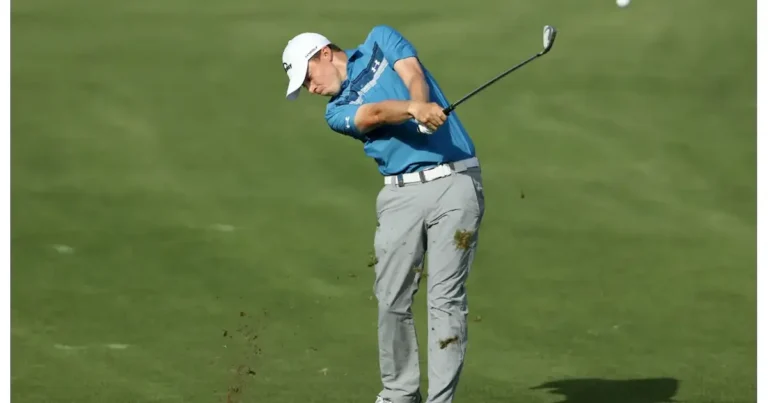What is an X Out Golf Ball: Good or Bad idea?
Golfers looking to save money often consider purchasing discounted “X out” golf balls with cosmetic blemishes. But are these budget balls, normally priced 50-60% cheaper than retail packs, worth using for your game? This guide examines what exactly X outs are, along with their potential quality and performance tradeoffs.
Recreational players go through a lot of golf balls due to wayward shots into woods and water hazards dotting most courses. So buying premium name brand balls at $4 per ball seems unreasonable for many amateurs. This is where X outs provide an appealing money-saving option. Sold in bulk quantities online or at discount stores, these are balls with minor cosmetic defects that fail manufacturer quality checks. The “X” indicates they cannot be legally sold under official branding.
However, X outs perform nearly identically to normal models and provide excellent value. But concerns over consistency and lack of data on latest designs means they may not suit all golfers.
What Defines an X Out Golf Ball?
Essentially, X Out Golf Ball brand name balls that have minor scuffs, paint splotches or imprinting flaws that don’t quite meet retail standards. These balls pass all other performance evaluations and contain identical multi-layer constructions with advanced materials seen in flagship balls used on professional tours. So compression ratings, dimple patterning and coring structure remains consistent. The only difference is small variations in appearance thanks to defects introduced during the intricate manufacturing processes. Some common “blemishes” seen on X outs are:
- Scuff marks along the cover
- Inconsistent paint coatings
- Off-center logos or lettering
- Discolored surfaces
These mostly cosmetic defects do not negatively impact key metrics like ball flight, distance or durability. Manufacturers just cannot legally stamp their branding on balls with noticeable imperfections. Fortunately, many leading golf ball producers sell these “X outs” in separate budget lines allowing cost-conscious buyers to reap savings benefits.
Potential Advantages of X Out Golf Balls
Buying X out golf balls, typically sold in packs of one or two dozen, provides recreational players advantages including:
Cost Savings
The bottom-line appeal of X outs comes from considerable savings over the same branded balls lacking flaws. Discount retailers commonly price X outs at $15 per dozen compared to $48 normal retail pricing. Even with bulk purchasing, non-X outs rarely drop below $30 per dozen, so the savings multiply fast, especially for high-volume range players. Advanced balls with four or five-piece constructions can even see X outs priced at up to 70% off.
Performance Maintained
Since X outs contain all the advanced material technologies and internal engineering of standard releases from companies like Titleist, Callaway and Bridgestone, they deliver extremely comparable performance metrics. Compression ratings that affect ball speed remain consistent in X outs. Aerodynamic dimple patterns that optimize flight carry over as well. Basically every performance-related structural design component including dual or triple core formulations are identical to conventionally packaged golf balls.
Latest Models Available
Shoppers can find X outs modeled after both older and newly released premium balls from top brands. This level of on-shelf consistency means players who already know which compression rating, construction style and brand they prefer can likely continue using those same preferences at friendlier budget pricing via X outs.
Potential Drawbacks of X Outs
However, some characteristics of X outs may dissuade certain players, including:
Cosmetic Concerns
While X outs function properly, some still consider their occasional blotchiness or scuffing aesthetically unappealing, especially on the greens or for critical scoring shots. Visual distraction could hypothetically impact rhythm for golfers who prioritize consistent looks.
Loss of Manufacturer Data
Heavily marketed modern balls tout extensive research and development testing used to maximize every design aspect. Brands print performance characteristics like spin rates, launch angles and peak heights right onto retail packaging as selling points. But X outs do not feature any comparable technical descriptions or measurable guarantees since legally they cannot represent branded products.
No Warranty Coverage
Should X outs exhibit premature issues like cracked covers or excessive wear, their discounted nature means you likely have no warranty recourse with the manufacturer compared to buying through authorized dealers. Once sold as X outs, balls essentially become final sale.
Potentially Older Stock
Branded balls sitting longest waiting to get imprinted then sold likely get relegated to X outs bins first. So some X outs may leave warehouses 6-12 months following initial production compared to latest batches shipping to retailers. But this likely affects playability insignificantly.
While minor scuffs or older manufacturing dates hardly alter how X out golf balls fly, the lack of concrete specifications provided or warranty support means golfers prioritizing maximizing dollars-per-performance might still prefer biting the bullet on costlier branded balls instead. Ultimately personal preference across value, quality and looks determines if discounted X outs make sensible ball options.
Key Takeaways
- X outs feature minor cosmetic defects but internally match retail balls
- Significant per ball savings make X outs extremely popular
- Performance should remain consistent with conventionally packaged balls
- Drawbacks may include older stock and lack of manufacturer warranties
- Preference across value and aesthetic appeal determines ideal ball choice
Carefully evaluating the pros and cons helps every golfer decide if affordable X outs offer worthwhile savings over balls bought at full market prices. The performance capabilities prove nearly identical across all metrics. But losing guarantees or product specifications plus potential appearance challenges requires some concession towards maximizing value. In the end aligning with acceptable tradeoffs or splurging extra on premium balls comes down to personal spending calculus across budget and expectations.
For many cost-conscious amateur players, reasonably priced X outs clearly provide desired results as entirely capable substitutes for improving enjoyment and participation in the game.







